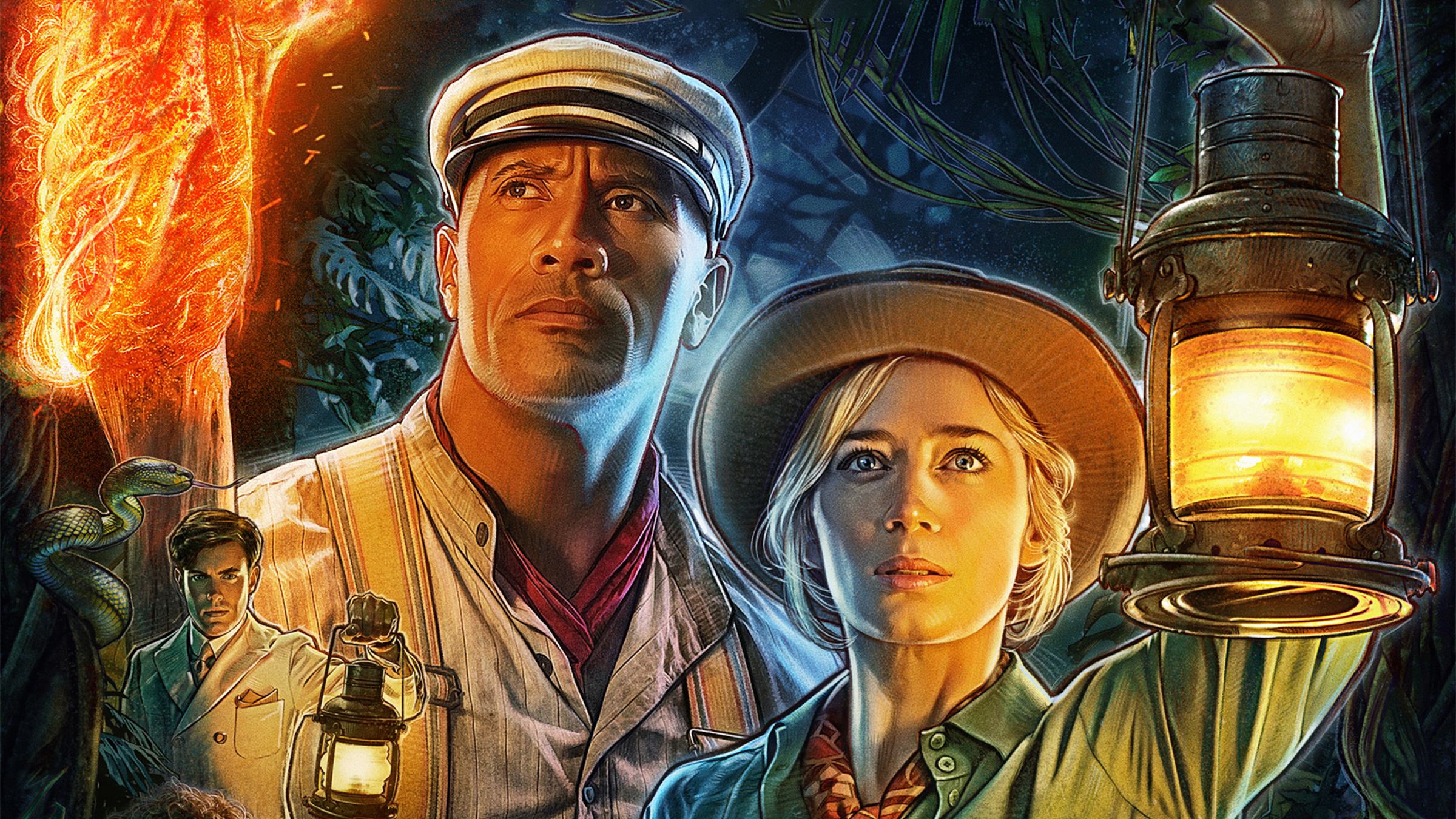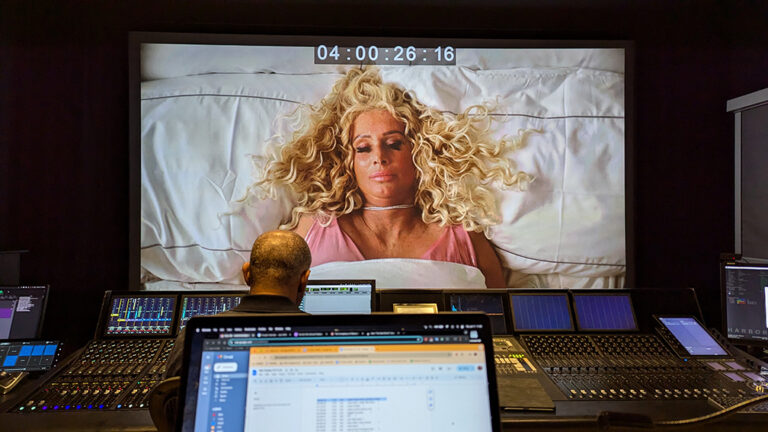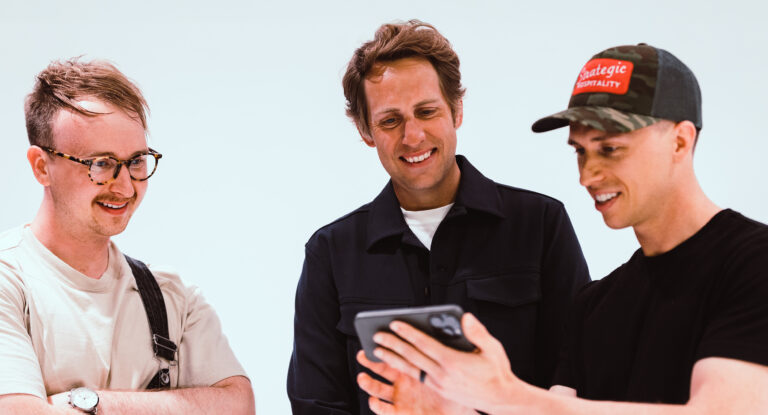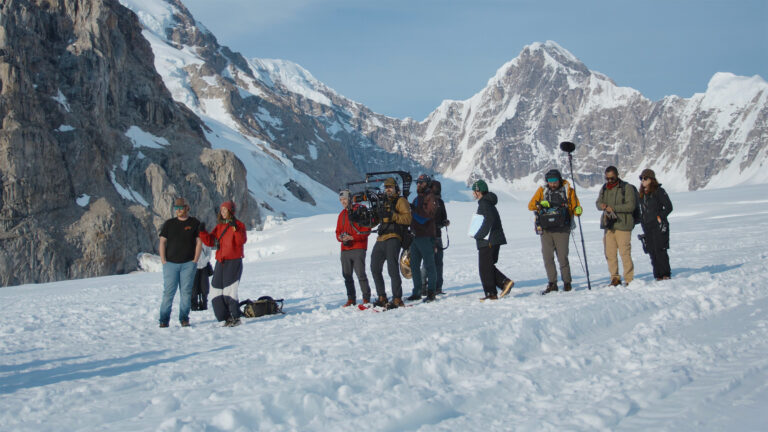With star power like Emily Blunt and Dwayne Johson at the helm, it’s pretty obvious that Disney is hoping to make waves with the launch of its latest adventure movie, Jungle Cruise.
So in today’s Art of the Cut we’re chatting with film editor Joel Negron, ACE, and sound designers Ethan Van der Ryn and Erik Aadahl. With a lineup like that, you can guarantee some sound advice.
Listen while you read…
HULLFISH: Joel, how much do sound effects help sell some of the bigger fight scenes?
NEGRON: Sound is huge. It helps tell the story. When you’re building an action sequence and putting the scenes together, you’re finding the right bits and pieces and finding the best, most exciting action bits; you always start with temporary sound.
We have libraries in our Avid that we start with before every project so that the sound effects that we’re using are our sounds that they are in their realm.
We bring in Ethan and Eric because of their fantastic sound design ability, and we talk about the movie; I’ll say things like, “Oh, we have this fight in the jungle, and I need people running, or I need spears hitting trees.” I use that while I’m cutting, and it’s super helpful.
I rarely cut action sequences silent. I look at them silent to make sure that they make sense, but then as I build them, I’m creating the storyline, I’m constantly adding sound effects and music to. We use temporary music from different movies that Jeanette puts in.
HULLFISH: It’s important that you get a big toolkit from the sound designers if you cut with sounds that you pull from some random sound effect, library, people get temp love with that stuff.
NEGRON: And usually it’s not very good, and you can tell it’s not very good. Over the years, we have done a lot of movies together, so they know my sensibilities, I know their sensibilities, and it’s been very collaborative that way.
HULLFISH: For Ethan and Eric, are there advantages to Joel using your sounds, to begin with, when you finally get into the mix?
VAN DER RYN: With most of the movies that we work on, we tend to deliver some kind of tool kit early on, just because, as Joel described, it helps in the development of the film to start in the right sound universe in terms of where it’s going to end up. The way we like to work is to try and get our sound in as early as possible and have it really develop parallel to the picture so that it becomes a co-evolution in a way so that the sound is always reacting to the picture and then eventually vice versa as well. We’re constantly updating Joel and feeding him mixdowns of our tracks for various scenes.
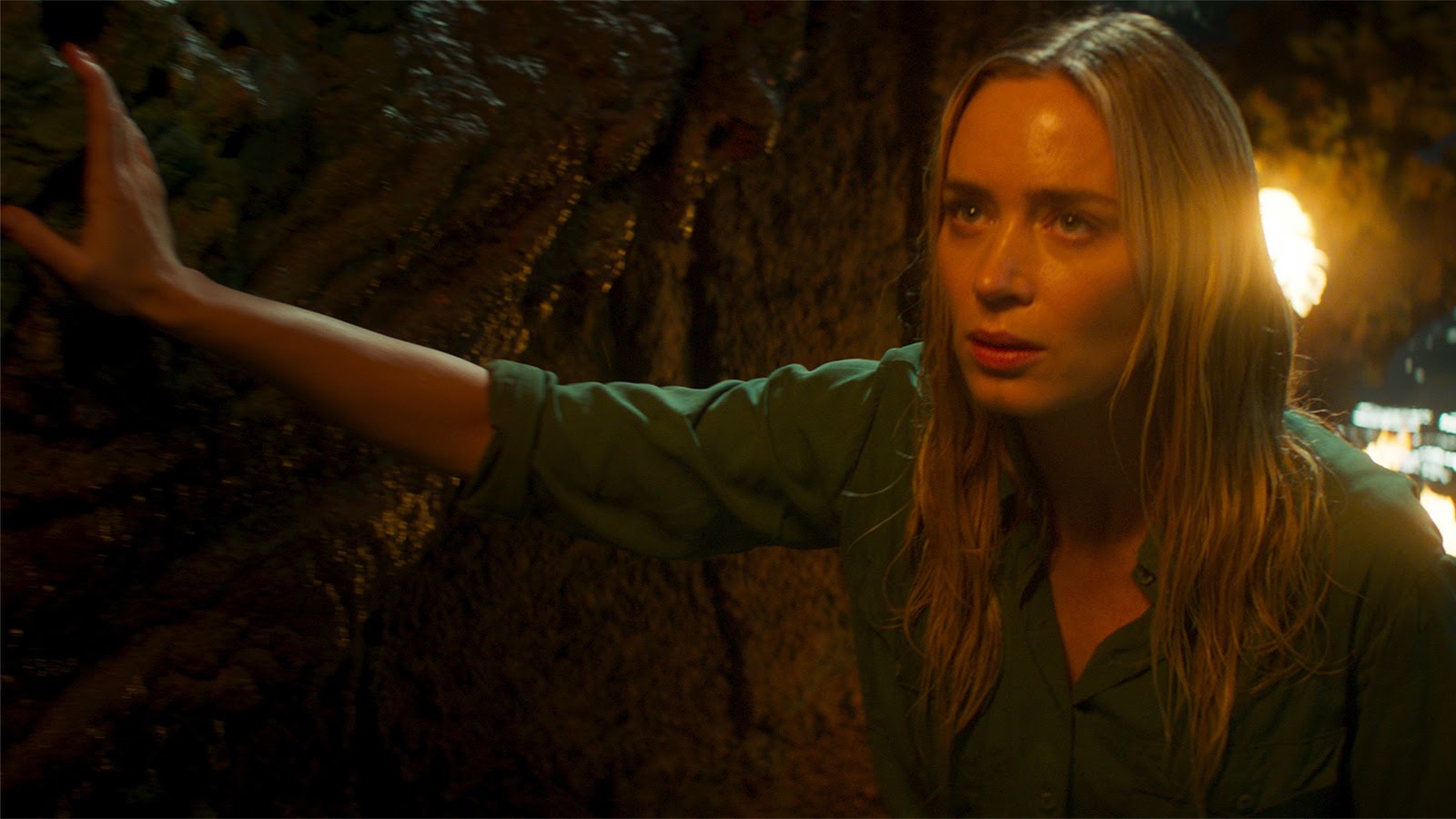
Once those go into the Avid, the track starts to develop organically with the picture, so hopefully, by the time we get to the pre-mixing, everything that’s in the Avid is in our tracks and vice versa, and we don’t have to deal with the whole temp love issue that you mentioned.
NEGRON: If we are using subpar sound effects or sound effects from a not-so-good library, that’s just there because it’s all we have. Sometimes people fall in love with that, and then later on in the process, you wish you could put in more elaborate and better design-y sound. You’re constantly convincing people or showing people sequences, and you’re constantly showing them bits and pieces of the movie, but you’re also selling it. For example, I’ll do an action fight sequence, and then I’ll show it to the director, and he’s the first guy I’m selling it to. Then when he sees it, he likes it, or he changes it around a little bit, and then it goes on to the next person, the producer or the writers or the studio.
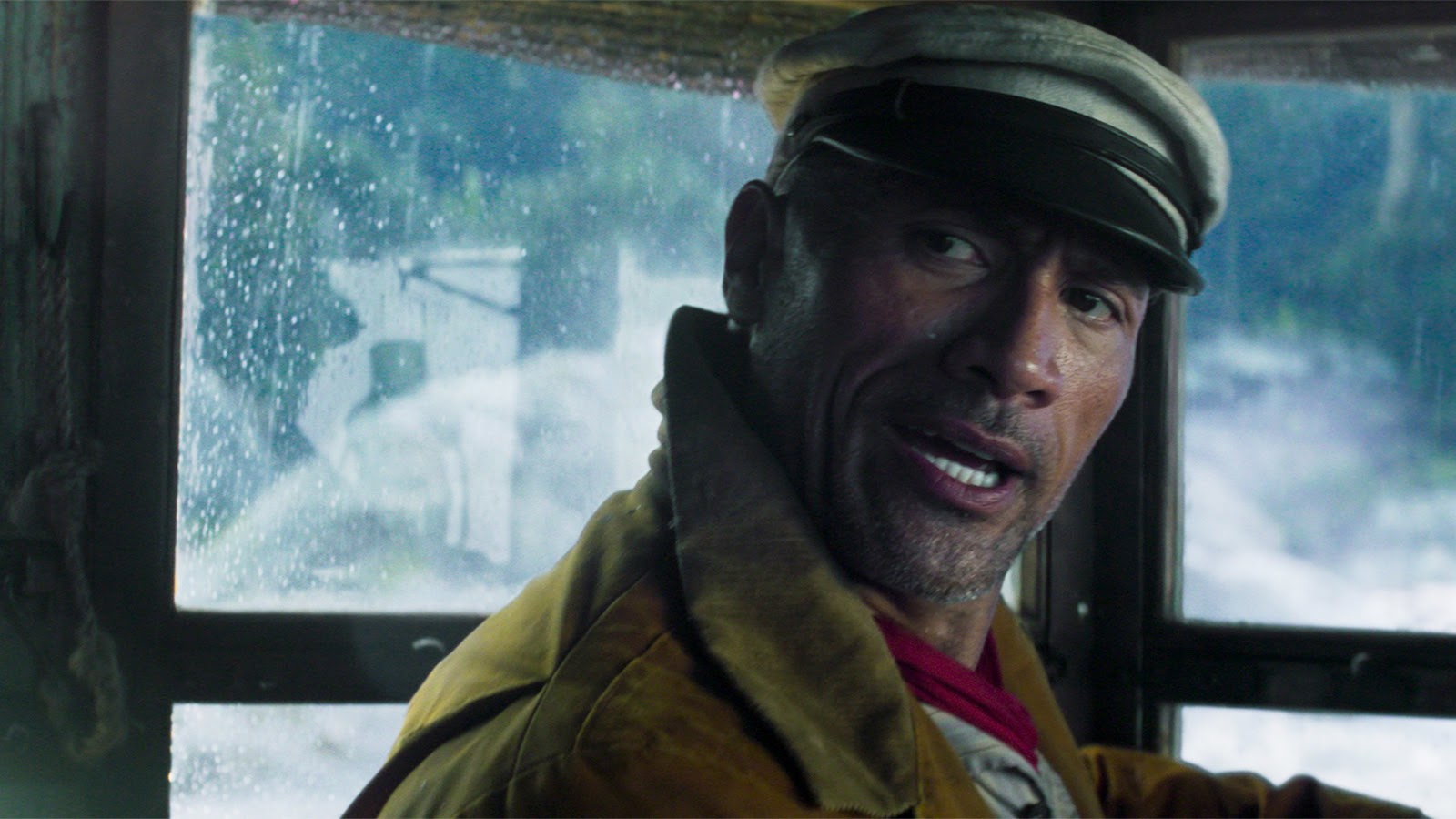
So to start the process off with your sound designer giving you a great tool kit, it makes the whole process so much better.
HULLFISH: Jeanette, tell me about the tool kit that you brought, what discussions did you have about what you could possibly temp with
SURGA: Joel will contact me, and he’ll go over in detail what the actual scene or genre is, and he’s pretty precise on what he’s looking for. I’ll send him a bunch of stuff, and then we will even collaborate. Working with Joel, he’s always got such a big-picture look at storytelling and how this movie will end up. So we go back and forth, finding the right emotional content.
HULLFISH: A lot of times, the music editor is almost a member of the scoring team. It sounds like you’re more a member of Joel’s team than the composer.
SURGA: A lot of times, I come on before the composer does; whether I know who the composer is or not, we still have to come up with some sort of tone for the scenes. We’re getting an idea of what it is going to be and what we can show them once it’s assembled.
HULLFISH: Does it help you once you know who the composer is? Do you start thinking differently?
SURGA: Definitely, but a lot of composers don’t like their music to be temped in. So if I can collaborate with the composer early, that’s a big benefit.
HULLFISH: There are a couple of places where intercutting happens between the villain’s story and the hero’s story. Was that as scripted, or was that something you needed to find your way through?
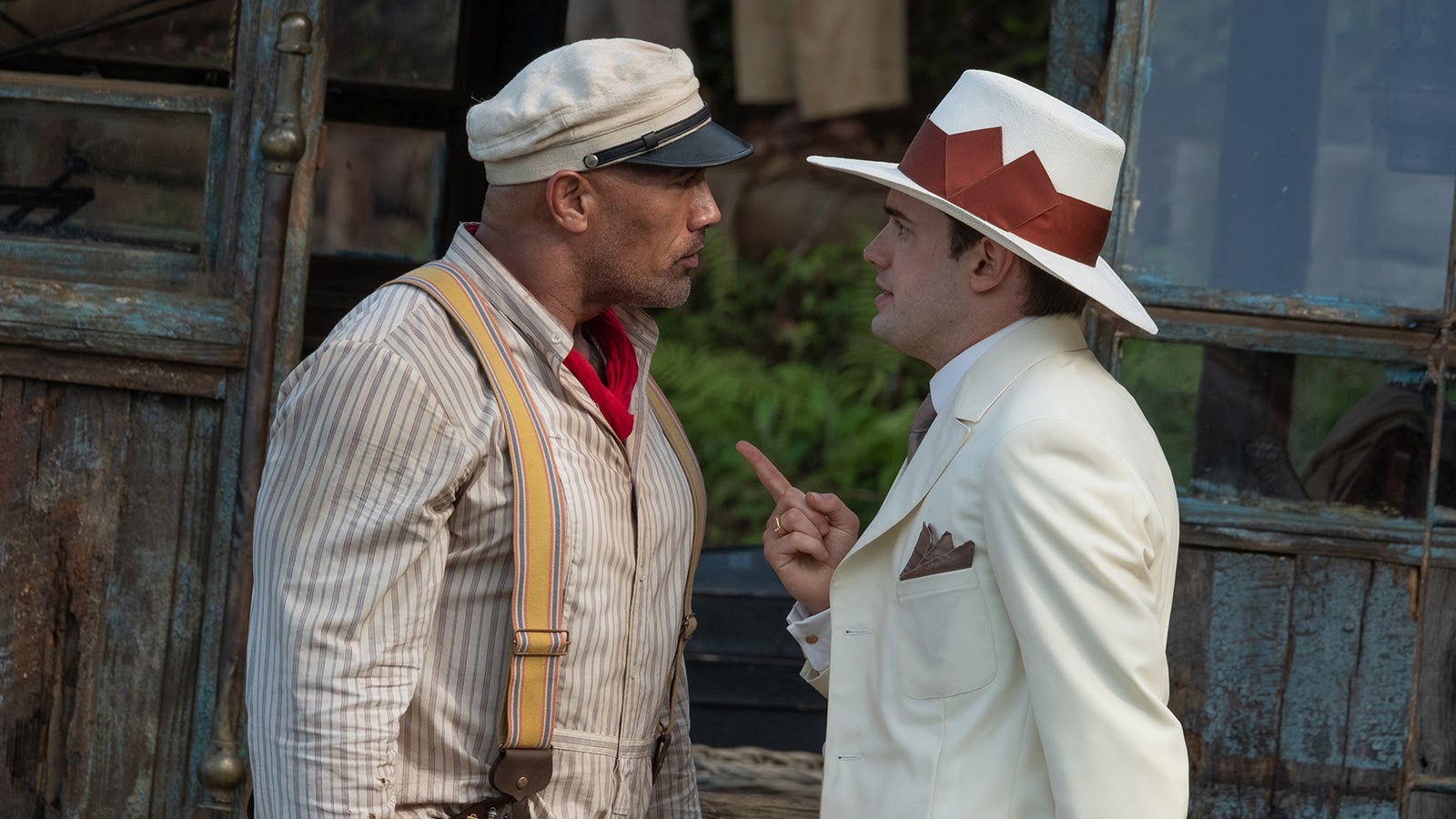
NEGRON: A little bit of that intercutting is in the script. One of the first directions Jaume [Collet-Serra] gave me was he wanted to do a lot of intercutting. There’s the Emily blunt character arriving at the port town, the same time that Dwayne Johnson characters arriving there. So what usually happens in editing is you end up overdoing it, and you start thinking it’s a little bit too much intercutting because people are getting confused.
It’s all about the story; as long as the story is being told in a linear fashion, you can intercut as much as you want and as many times as you want. What we did, even in the action sequences, is we overdid it, and then we brought it back, and then we just kept fine-tuning it and fine-tuning it until it was working the best it could.
It’s a matter of balance; that’s the best way to say it. It’s a matter of balancing whose story you want to be with and where do you want to go next? So if you’re invested in the main characters during action sequences, you want to intercut to see what the bad guys are doing every once in a while, but you want to really stick with our heroes.
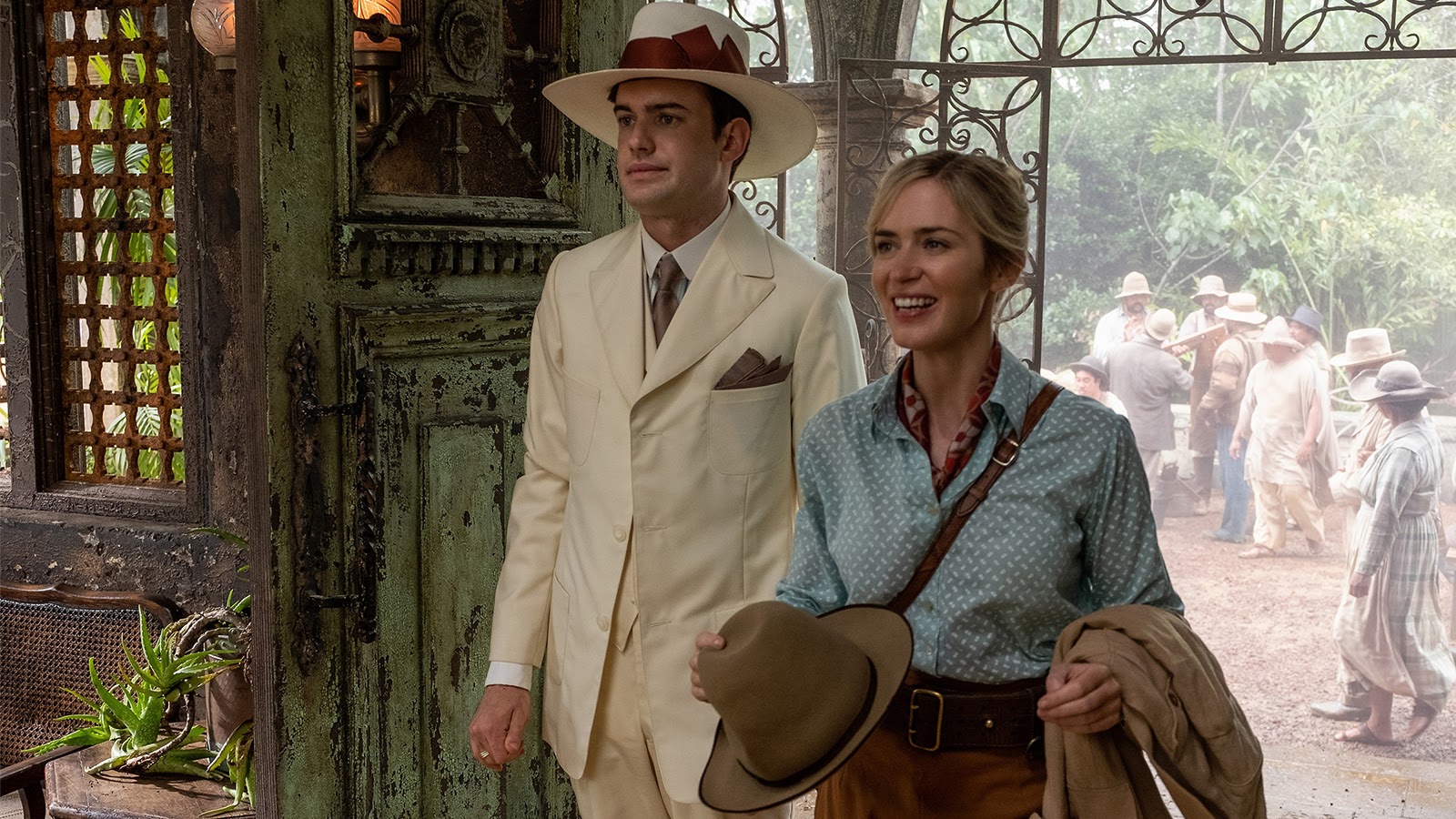
I’m constantly trying everything, constantly trying different angles, trying different cuts, trying different cutting styles, just to try and make the sequence or the scene the most entertaining it can be.
HULLFISH: When do you cut away? If it’s two linear stories, what’s the choice of cutting from one story to another.
NEGRON: I would say it’s emotion. When I’m watching it, I emotionally feel like I’ve set this story point, and I showed the audience’s story point. I’m ready to move on to the next story point, and if the next story point is the same characters, then I wouldn’t intercut, but let’s say it’s like a period on a sentence. For example, then you would intercut. You would want to see what the villain is doing or what the other characters are doing.
If it feels right to go to somebody else, you will, but if not, you just stay with the same character and stay with the same storyline that you’re in.
HULLFISH: When it comes to the banter between Frank and Lily, did you feel like you needed to build the rhythm and pace between them, or was it pretty natural for the actors to do that themselves.
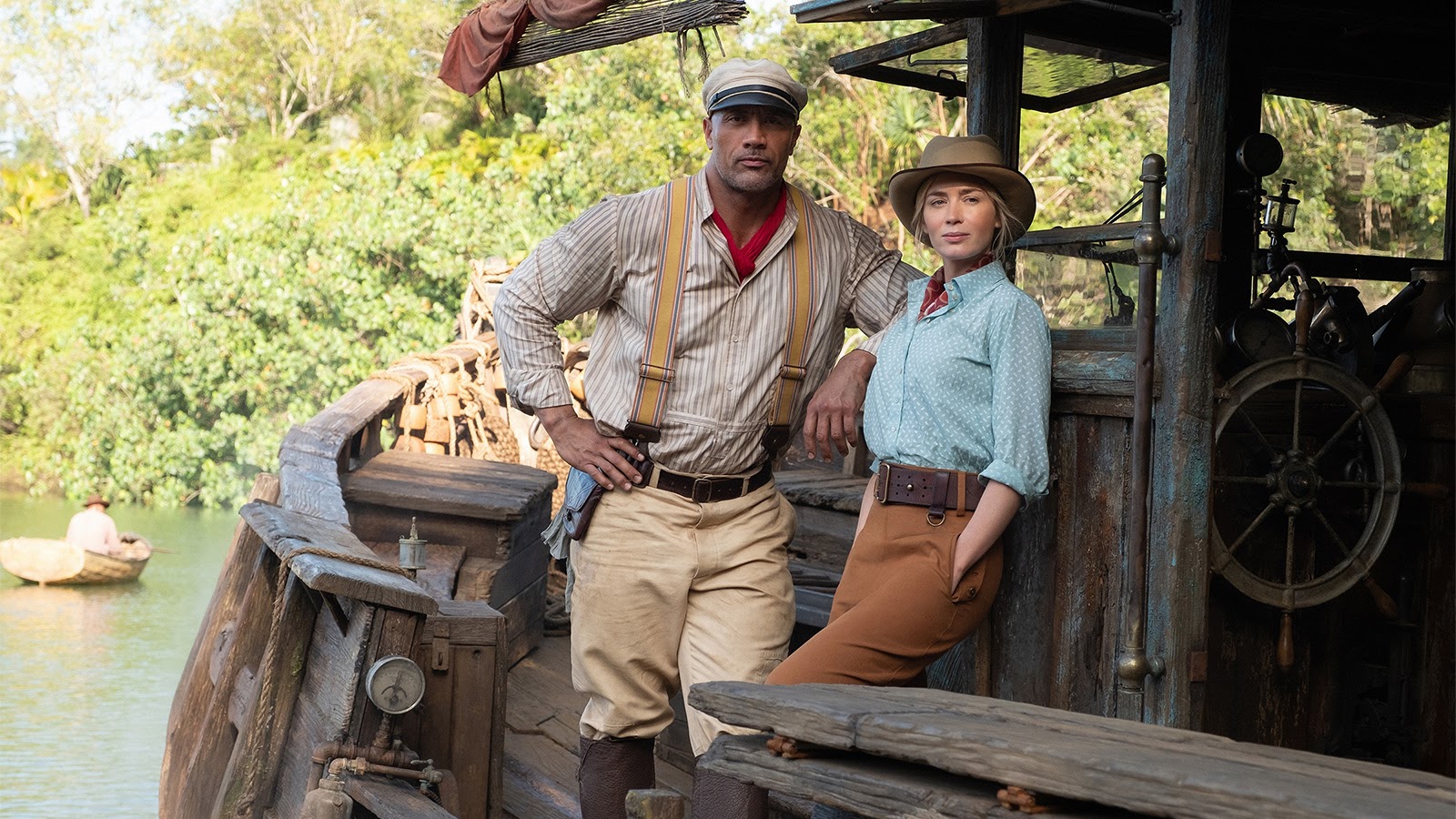
NEGRON: They were actually good to go. Emily and Dwayne really like each other. They’re like best friends in real life, and there are some scenes where they were right on it; the banter was perfect. Everything was shot double, two cameras, three cameras, and in those cases, you just cut between them, and it works great. Then in other cases, you trim it, and you shorten it, you take lines out here and there, but luckily they were amazing.
Both of them were really good; it was such a pleasure to cut their dailies. The other character Jack Whitehall, he’s a comedian, and his comedic timing worked out really well, too. So in that instance, it made it easier to banter back and forth and to cut the scenes in a way that’s paced properly and entertainingly.
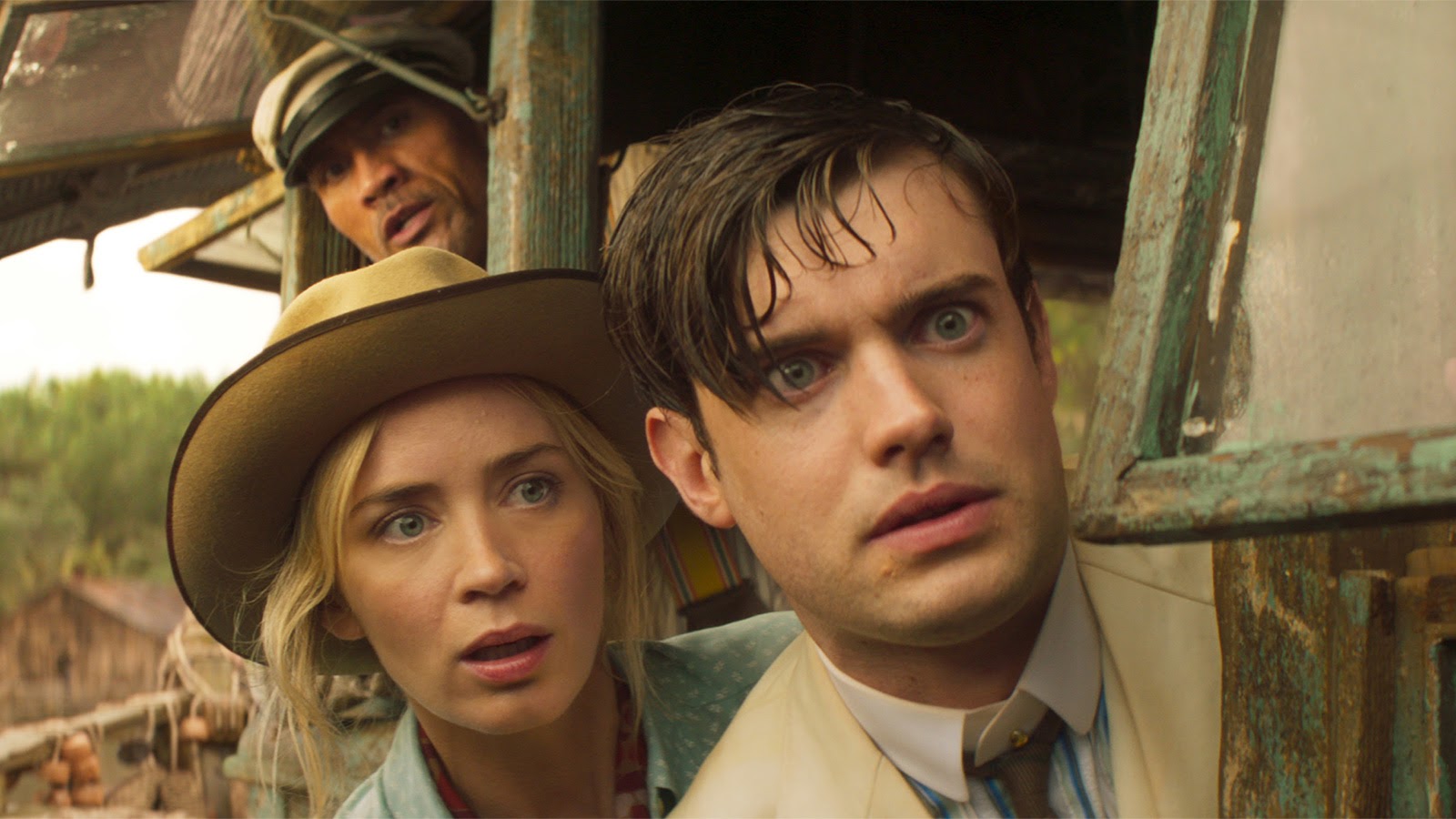
HULLFISH: Tell me about trying to structure the film so that you feel we haven’t waited too long to get to the story, but we haven’t lost too much in terms of the setup.
NEGRON: That was a challenge because we had tons of setup; Jaume likes to shoot a lot of film, which is good. I don’t find a director shooting a lot of film cumbersome because then we get a lot of choices and we can go wherever we want to go. He had a lot of setup in the opening with the Conquistadors, a lot of setup with Lily and Jack Whitehall’s character in London, and then we had to go to the setup of Frank. There were three areas that we had to get through before Lily even met Frank which is really when the movie starts; that’s when they get together, they meet, they get on the boat, and they head off into the Amazon.
You got to shake the machine to make it work.
There was a lot of stuff to do before the two met, and it was just a matter of finding out what the least amount of story we can get away with for each chunk. It was challenging, and we just worked it and worked it. It’s like if you ever played pinball on a pinball machine if you don’t shake the machine, the ball just rolls down and goes into the hole, you got to shake the machine to make it work, to get the thing to move where you want to, that’s what it feels like. You take the material, and you’re just shaking it and moving it around, trying to find the best way to get from point A to point B, especially in an opening with so much setup.
HULLFISH: One of my sound questions was about the decision to go completely silent with Lily’s 16-millimeter camera. What was the reason to go silent with that?
HUEZO: I believe this was Jaume’s idea, but there is a little hand-crank sound that’s going over those black and white internal camera images, and for me, it’s super fun to be able to pop back and forth between that very minimalist little cranking sound and then the lush backgrounds of the Amazon. My favorite thing about working on this film was it has such an epic scope, and Disney gave us a lot of resources to not take shortcuts. We actually built a Jungle Cruise library from scratch, which involved us going out and doing several jungle recording expeditions. We sent somebody out to the Amazon rainforest in Brazil for a few days to record in surround sound, and then our incredible post-production supervisor got me funding to fly down for a week to this remote rainforest in Costa Rica, which has the most pristine wildlife and hundreds of species of exotic birds that only exist in the Amazon and that region of Costa Rica. All those atmospheres that you hear are created uniquely for Jungle Cruise.
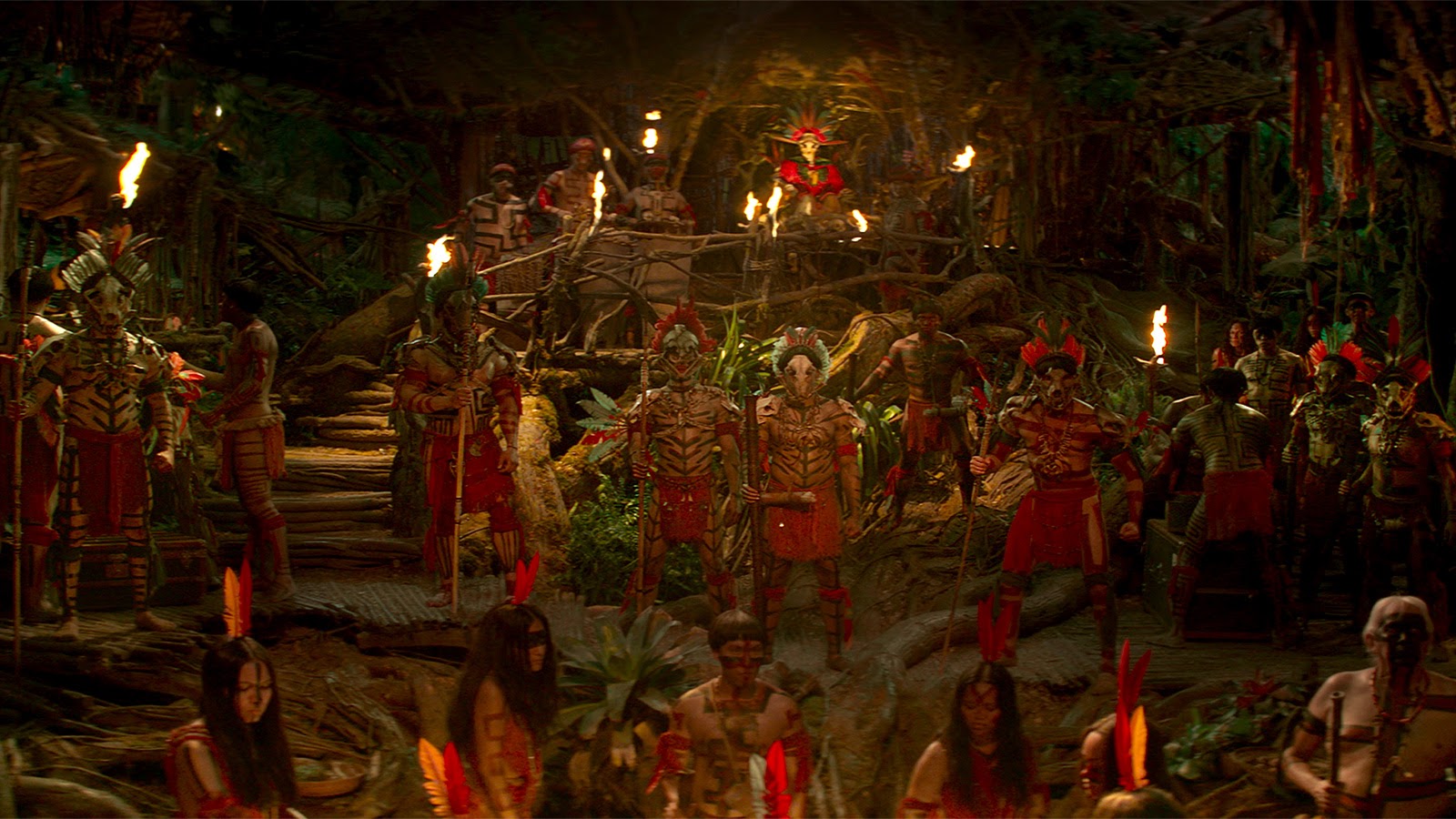
We used several different types of recorders; one of them is what’s called an ambisonic microphone, which records 7.1 multichannel in super high quality. We also had a parabolic microphone to capture toucans or howler monkeys in a really clean laser-focused way. We used that for a bunch of different things like recording these steam engines, which were original turn-of-the-century vintage steam engines that we’ve created Frank’s boat with. Also, for Frank’s boat, we used some of the steam releases from the original engines from the Disneyland railroad. The Proxima character is a Jaguar, and she was built out of a whole collection of big cat recordings that we’ve done from leopards to pumas, and when she gets more aggressive, we ventured into a little bit of tiger, and for baby Proxima, my cat Lola made an appearance as well.
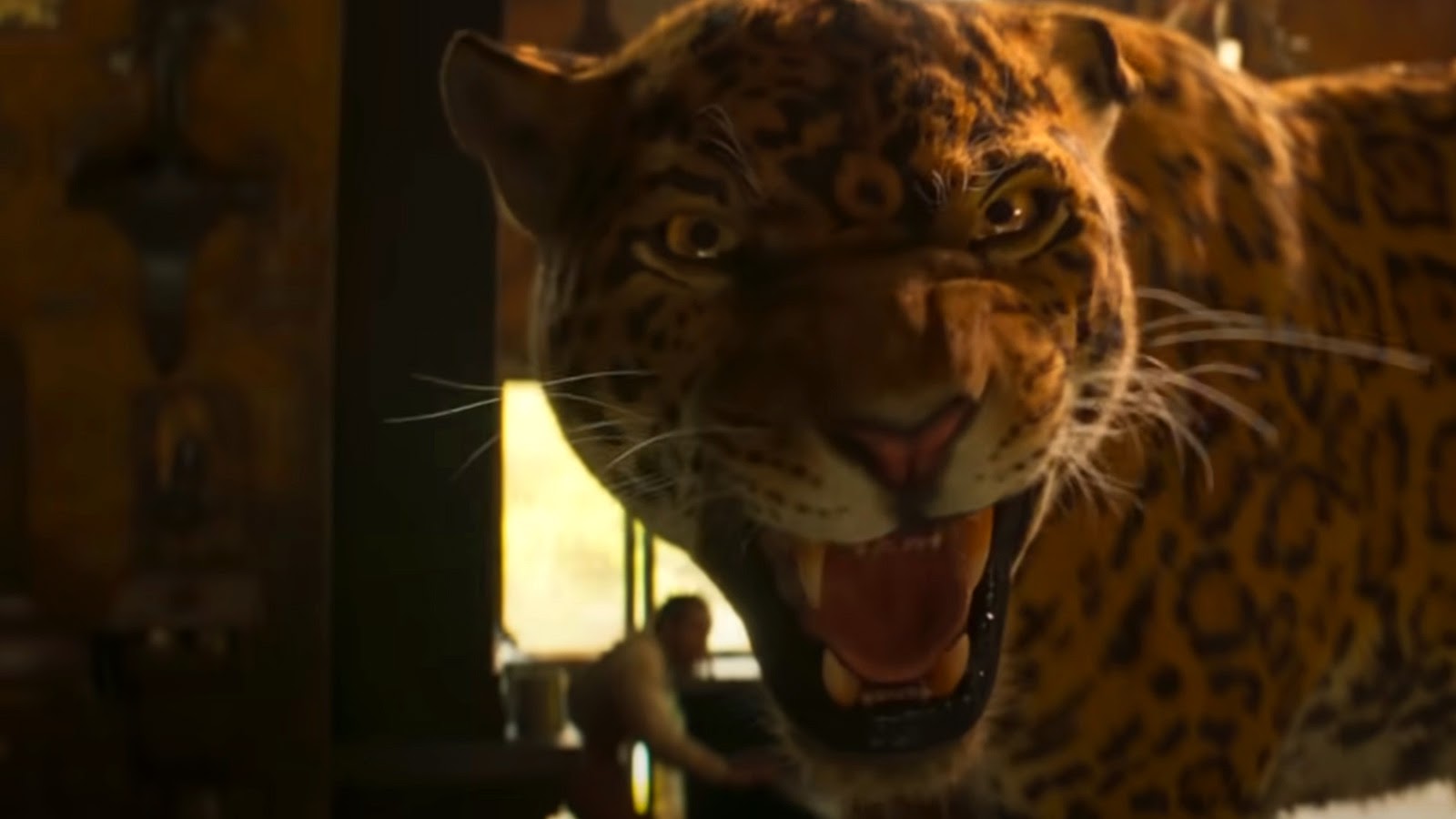
HULLFISH: Talk to me about making some of the fantastical sounds.
HUEZO: The Conquistadors have an otherworldly element to them, and they each have their own different theme. They’ve been cursed, so it’s like the jungle has taken their bodies over. One Conquistador has a mud and frog kind of flavor, and for that character, it was actually very, quite literal. We’re using clopping mud, and little frogs, which also were some frogs we recorded in Costa Rica, poison dart, frogs, then another Conquistador is based on a beehive. So there’s a sticky honeycomb dripping sound we use; he’s a fun one because the bees turn into the little characters of their own too. Then, of course, we have a snake Conquistador, which actually was more difficult; snakes don’t make great sounds. So that’s something we needed to consider. We had to construct those snakes’ sounds out of pressurized air releases, and then we add a tremolo to them to give it a rattle-type sound. Finally, we have our tree guy. He’s got these vines and branches that grow out of him, and for that, it’s a combination of would stress, which creates really nice deep sounds for him and convey a sense of power.
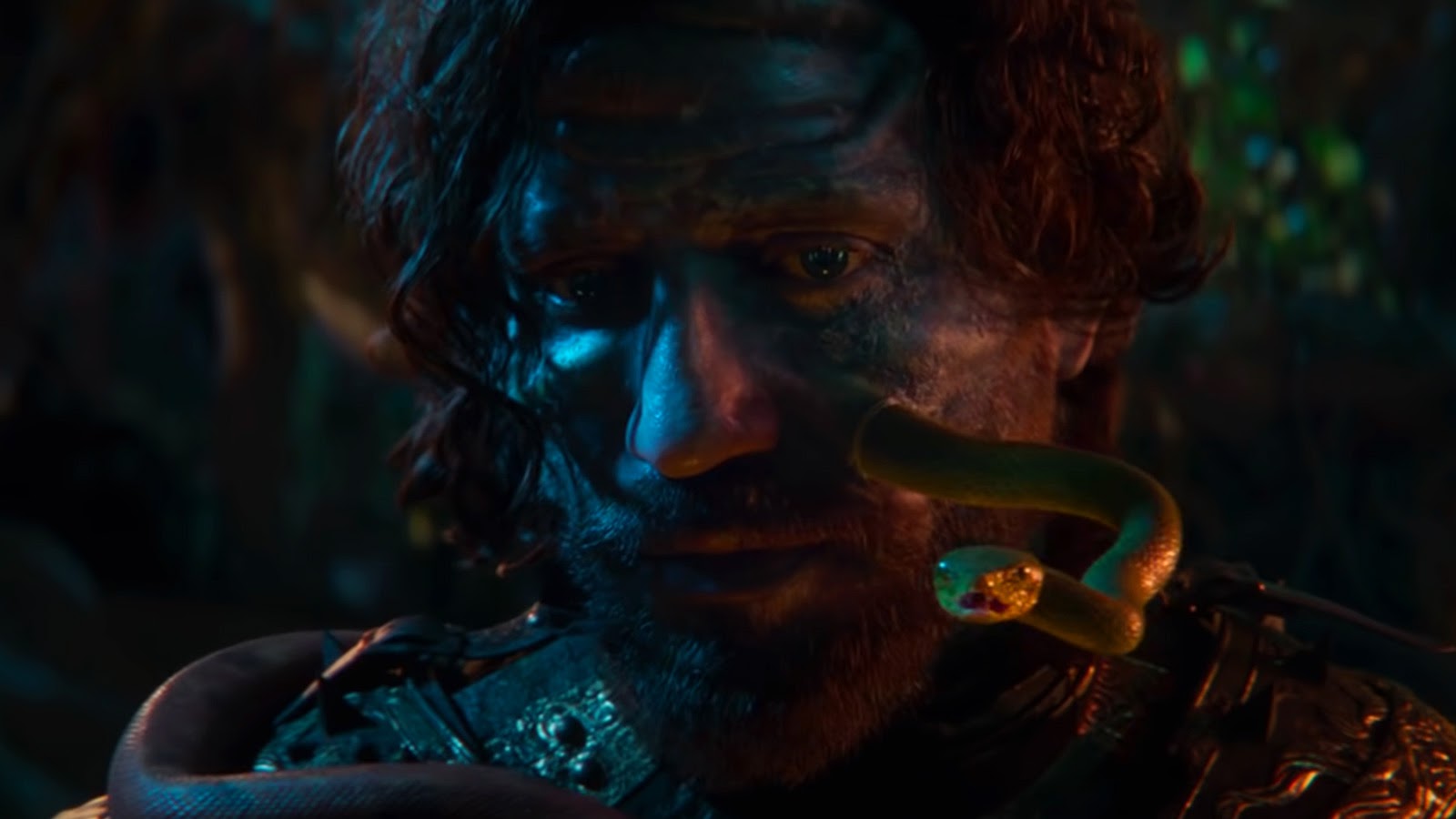
The great Walter Murch, both picture editor and sound designer, always described this idea of, “If you just have a steady sound it’s a killer for scenes, it’s death and always needs some type of movement, whether, tempo, movement, dynamics changes of pitch.” to me part of the fun of sound design is how abstract it is. There’s this alchemy between sound and picture; it’s so malleable, it’s like sculpting, you can really make a lot of bizarre things work.
HULLFISH: Any other funny little things like your cat that we can listen for?
HUEZO: One fun, little thing that comes to mind during Frank’s first jungle cruise tour some poison darts get blown at the ship, and that sound of the darts traveling through the air was my old studio ID which had a frayed plastic edge to it. It had a little string, and when I’d whip it around, it had this great slicing sound, and it sounded like a ninja star or a poison dart.
NEGRON: We’re always walking through life, listening to things and saying, Hey, that’s a good sound. One thing about sound and the reason why we’ve done so many movies together is because they are the masters at knowing which sound to hear at which time.
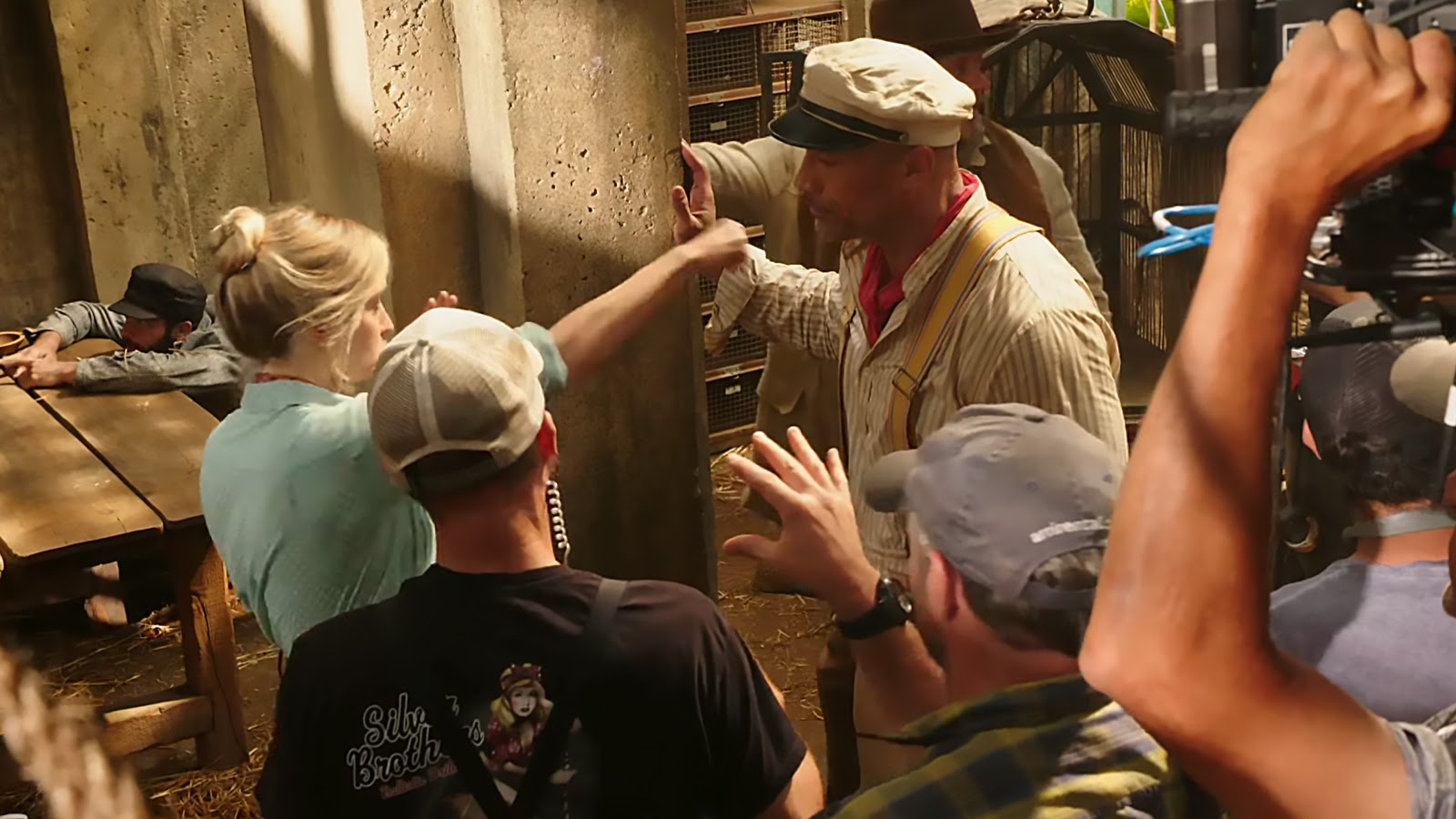
We’ve done the transformers movies together, and we’ve done other movies, and you don’t get explosions and metal clashing. You just get the sounds that you need to hear. That’s, what’s really impressive about the work they do, Ethan and Eric, and they did it on Jungle Cruise.
HULLFISH: Joel, how are you monitoring sound in your edit suite?
NEGRON: I was monitoring left, center, right, I had three speakers, and I would have dialogue in the middle and sound effects and music on the left and right. It’s a good question because I’m working on a show now where I’m just stereo, and you do want to have a great presentation while you’re working and you want the people that are with you to have the best experience possible but when I’m in a cutting room sound is obviously part of it, but I think it’s better to have your minimal while you’re cutting and make it pleasant for the people that are with you in the room. Leave the big elaborate surround sound 5.1 for later because your room is a little tiny room; it’s not a theater. You can sit there and spend hours and hours making the sound and music perfect, but then you’re neglecting your job, which is the picture and the story.
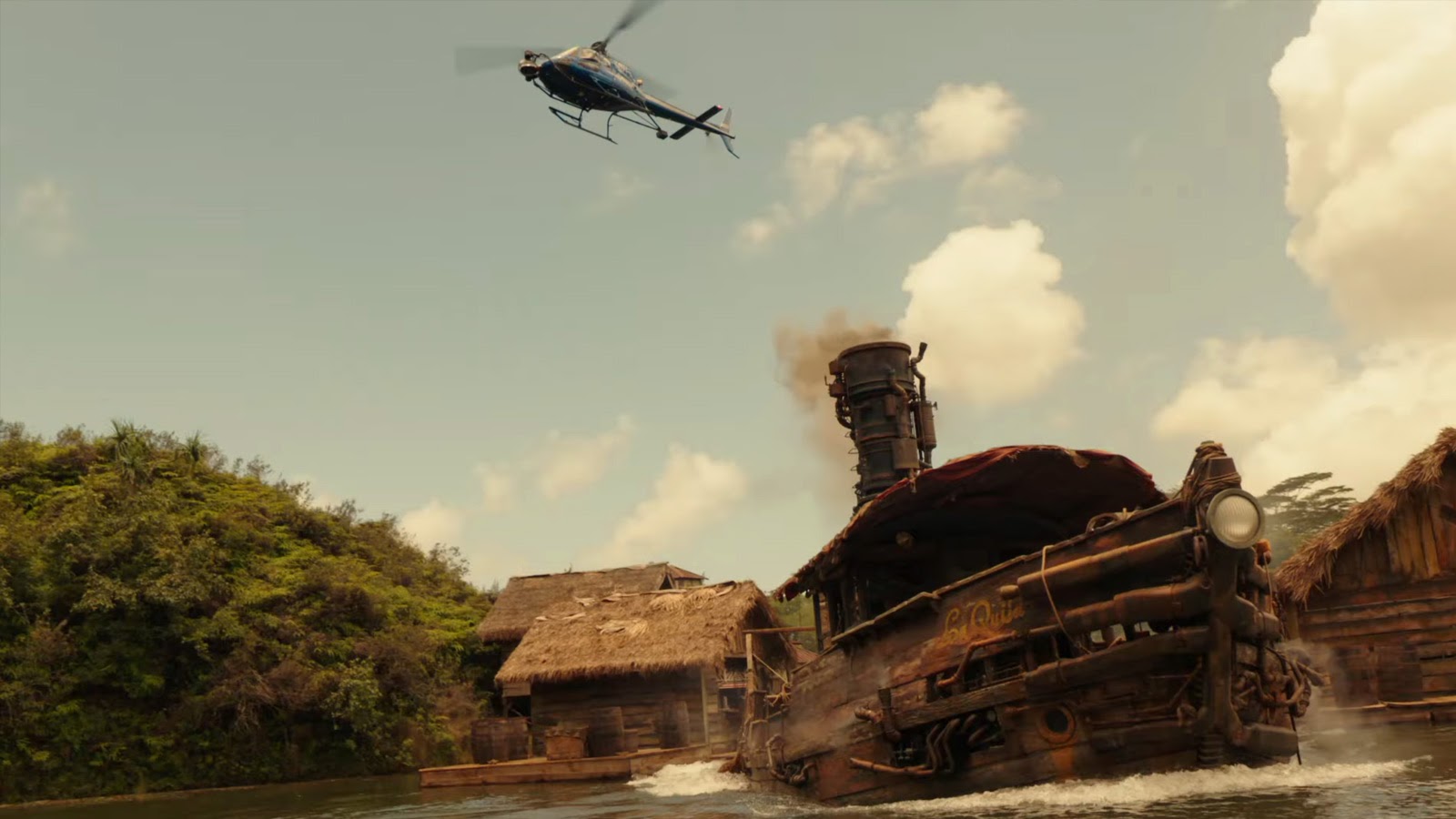
I make sound the best I can, but I don’t make it too technically fantastic. I just make it clean and pleasant, knowing that someday it’ll go into a dub stage, and it will be spread out and put in the Atmos and sound amazing. The good thing about left, center, right, is I have a Mackie Mixer, and if I’m running a scene and the director hates the music, I just dial it down, so he doesn’t have to hear that music anymore.
HULLFISH: Jeanette, can you describe some of the things that you brought in as a tool kit? What are some of the temp score things that you used
SURGA: We went into Avatar, and a lot of like Peter Pan, and then we went into Apollo 13. It took place in 1916, and we wanted a nice traditional orchestral score. So we pick the pallet from that. There was a lot of James Newton Howard. Fantastic Beasts was another score that we used a lot.
HULLFISH: Did you get anything from the composer further on down the line before he started delivering finals?
SURGA: We started getting demos from James down the line, which were fantastic. It gives you a great idea of where he would like to take the score and the themes. Once we started hearing the Jungle Cruise themes, it was clear this is the direction we wanted to go. James writes to picture every scene, and then he’ll have his music editors Jim Weidman and David Olson deliver to the cutting room. We then start looking at and listening to what it’s going to be.
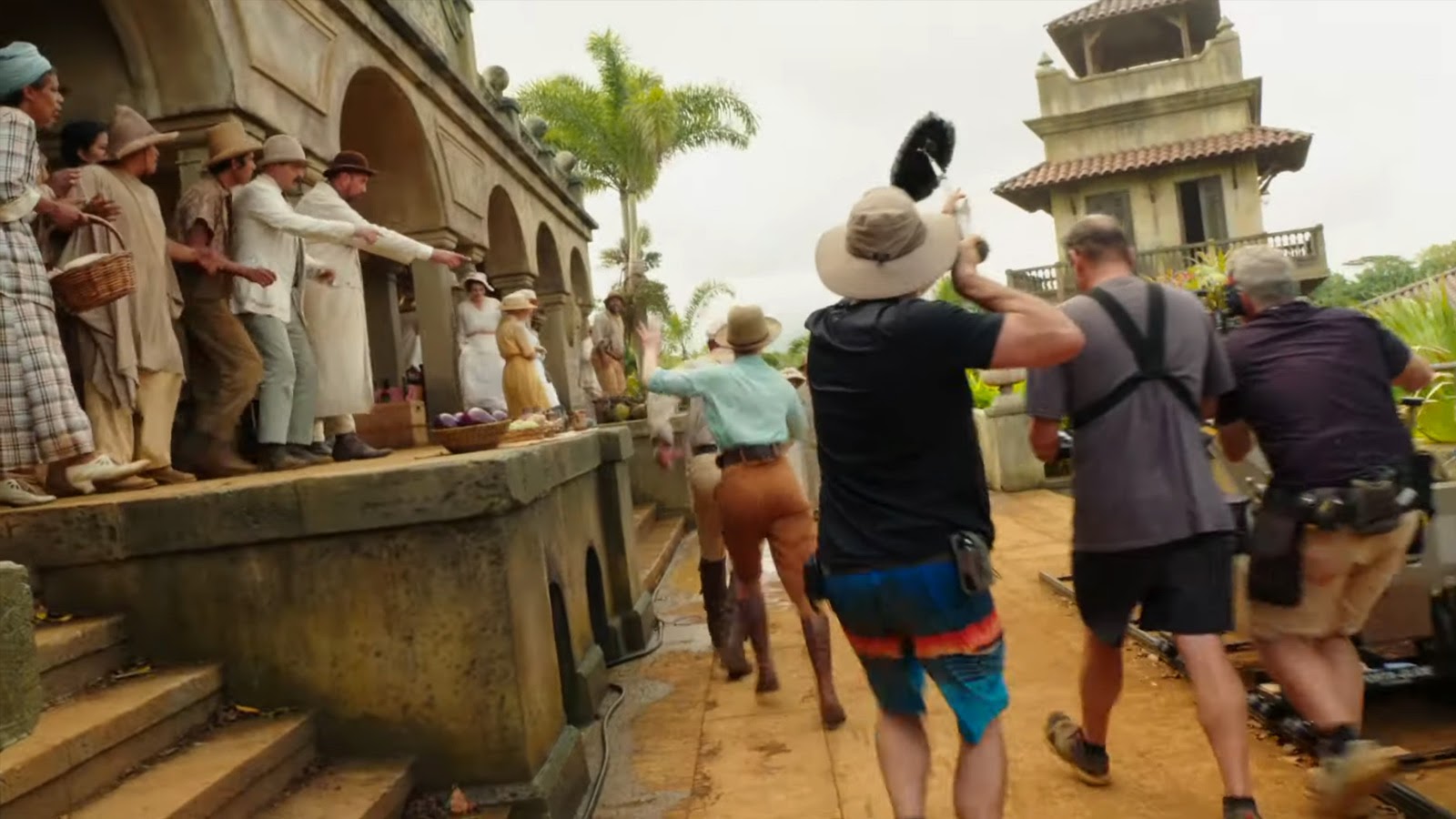
James wanted to start getting things ready for the orchestra and start prepping, and at this point, there were some cues in the movie, but not all of them. It was half temp, half James Newton Howard. A really great moment was when James hit the space bar, and we actually watched the movie with his music. We watched the entire movie from beginning to end, and the lights came up, and everybody was like, this is a movie. No more temp score, It was his themes, the bad guys, the good guys, thematic moments, and it was it was definitely a great moment.
HULLFISH: Did you guys get to be on the stage for that recording
SURGA: Every day, every single day.
NEGRON: Yes. It was a lot of fun. What’s amazing when you go to those scoring sessions is they’ve got a hundred-piece orchestra, and they put the music in front of them. The first time they’ve ever seen the music and James says, “okay, let’s do a rehearsal.” and it’s this amazing score. The musicians are so good and so talented; it’s just incredible how that works.
HULLFISH: Was there value to you being there other than it being a fun experience?
SURGA: Absolutely, especially when we get to the dubbing stage. Personally, being the “new one” of the music editors, knowing what it sounds like there and knowing what it sounds like in the mixdown and knowing how it’s supposed to sound and the dubbing stage, it’s very valuable for me to be there.
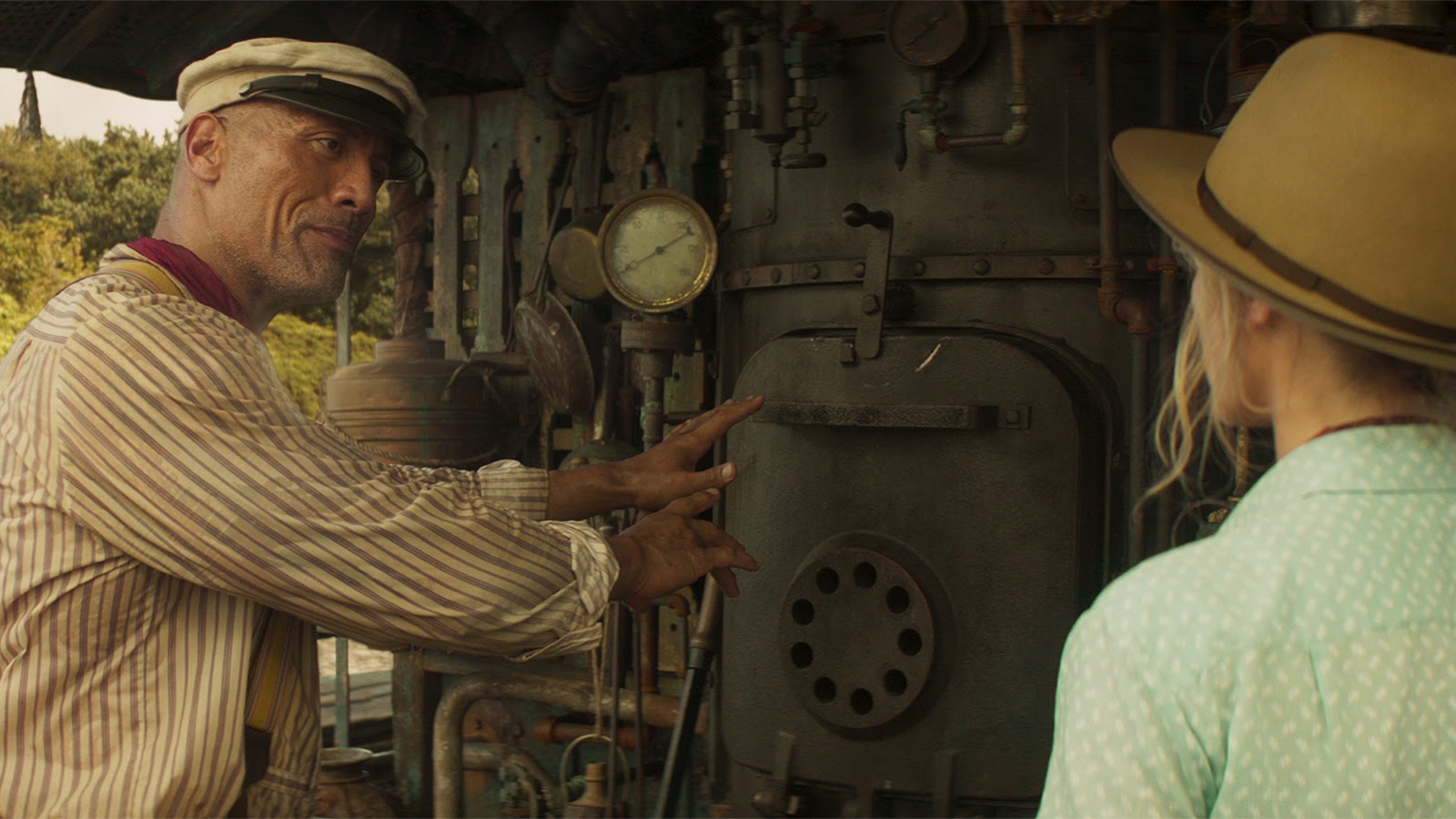
NEGRON: You also hear all the conversations; you hear the takes that they liked better. You’re aware of an alternate cue, and you can see how the director’s reacting to the alternate cue while all it’s being recorded. So there is a value to it; for me, as a picture editor, there’s not a lot for me to do, but still, there is some value to being there.
HULLFISH: What’s the skill set of cutting a film of this scale with this amount of special effects.
NEGRON: It’s all about not thinking of it as a big film and instead thinking of it as little pieces. The scenes are just little pieces, and eventually, it gets bigger and goes together.
It’s all about not thinking of it as a big film and instead thinking of it as little pieces.
You could get a scene, and it could be a bunch of blue screens, or it could be a guy in a suit walking around. It could be with actors acting to nothing, especially in these big movies, you get that a lot and you have to use your imagination. You have to imagine in your head where that mud guy’s going to be standing or where the animated animal is he going to be and picking the best performances of the actors.
Emily is amazing, she’ll look at nothing, and if it’s supposed to be the mud guy or a Jaguar or something, you believe that she’s really seeing it. There’s a rapid sequence where the boat hits these heavy rapids, and in reality, she’s in a little tiny pool in Atlanta, but you really feel like she’s in those rapids. I have to see what she’s doing or what Dwayne’s doing or what Jack Whitehall is doing, and I have to just imagine the environment around them or the monster that’s coming to chase them and put it together.
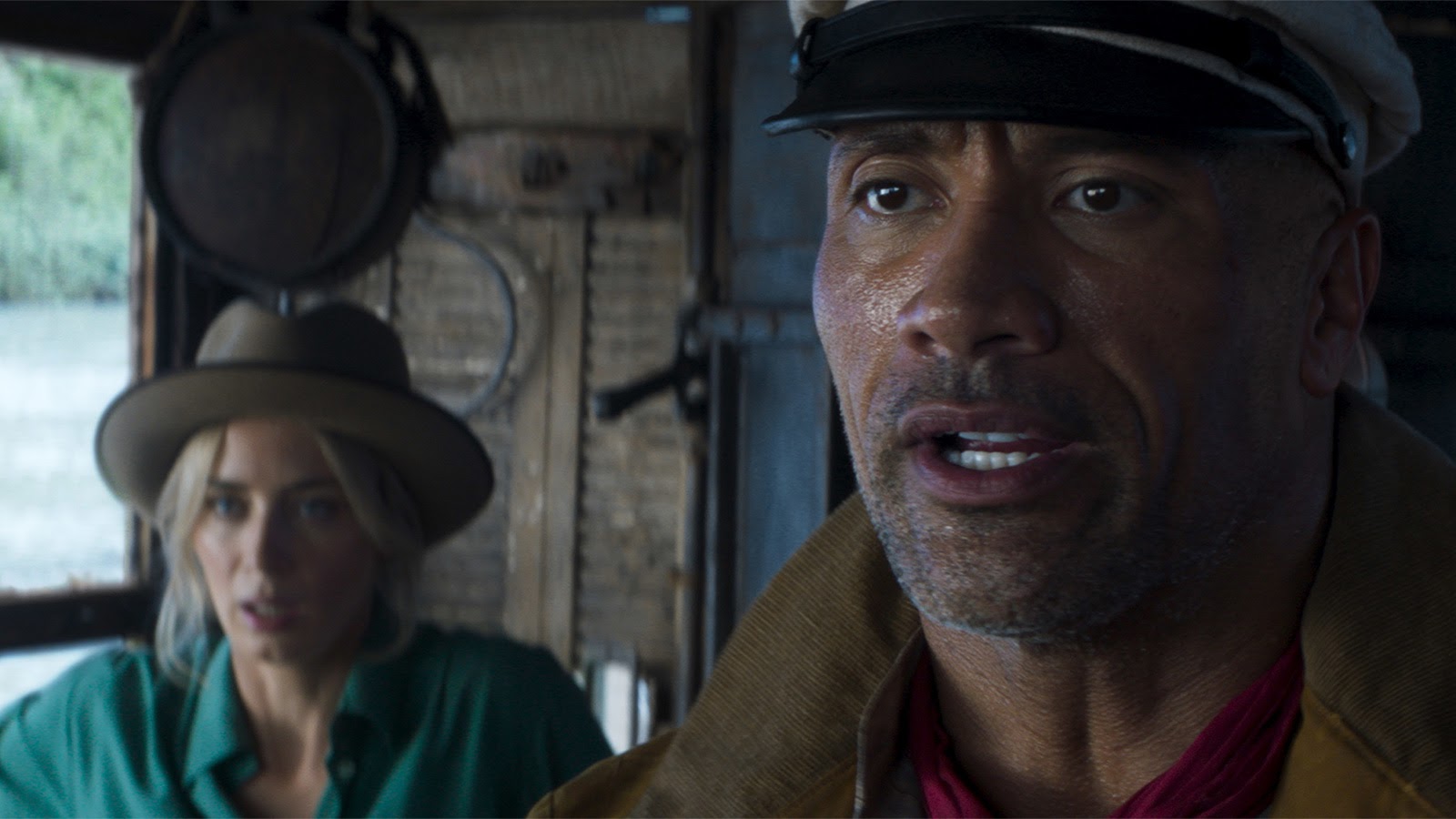
We’ll add previz from the visual effects company, so then you can comp together rudimentary animated figures of whatever’s in the scene, and then the next step is the previz people will comp together something. It gets a little bit better piece-by-piece, and eventually, you get the big picture, so to speak.
We went back and we shot in Atlanta again for three weeks and pretty much reshaped the entire third act.
HULLFISH: Were there structural changes in the film at all?
NEGRON: Yeah, there were some structural changes. There was a third act that was not really working. So we went back and we shot in Atlanta again for three weeks and pretty much reshaped the entire third act. We brought in a writer, Michael Green, and he looked at it, and it was good, every screening we’ve ever had, people have loved it. From the very first director’s cut until our last cut, people have always liked it. It was one of the things that Sean always would say. “We need to plus it.” and that’s what we were doing with the third act changes.
One of the things that helped us in the structure of the whole movie and knowing where the characters are was to put a map in there. One of the things that the map does is it shows you how far they’ve traveled because you’re with them and they’re on the boat, but then you come to the next location, and you don’t know if they’ve gone a hundred yards or a hundred miles. So we have this technique of cutting to the map, so you see the boat moving around, then it turns into the real boat into a different location. The other thing is we put location cards; you’ll see titles of the different locations of the items that were on the map. That helped us structurally put together the progression of were in the story we were.
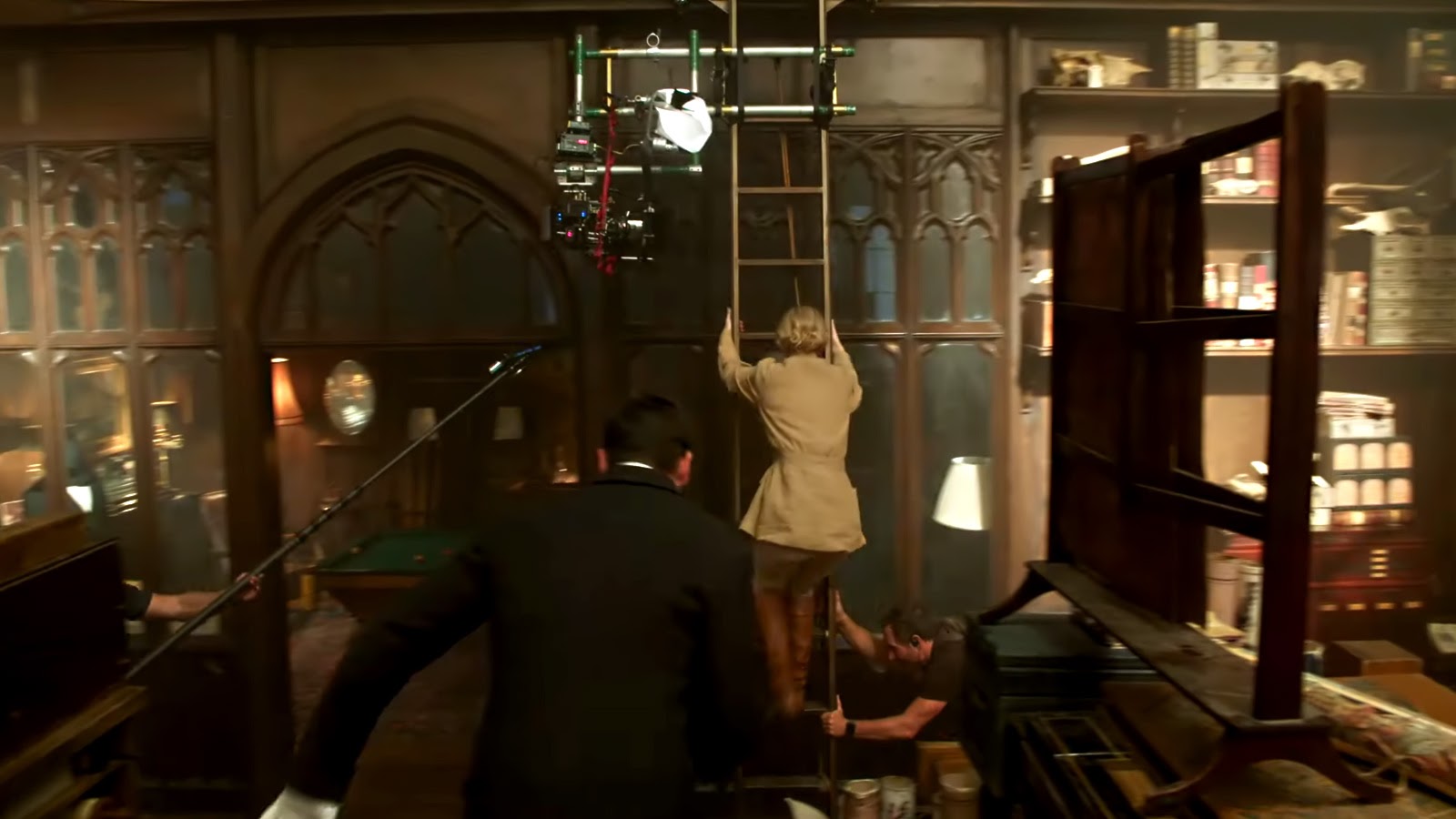
HULLFISH: How do you approaching a big tent pole moment to try to start editing it?
NEGRON: There’s a tree village fight, for example, which is enormous, and it took a lot of first unit and a lot of second unit; I don’t know how many days, but it was days and days to shoot. What I did with that sequence is I got the first unit, I went through it, I looked at everything, and as I’m looking at it, I’m taking pieces and making a select reel of all the pieces that I think are best for the story. It’s not shot in order, nothing shot in order, so it’s all over the place. Then I will take my select reel, and I’ll have an assistant put it in scene order. Kevin Stormer or Christian Sharif, we’ll just put it in scene order for me, so then I have all the best pieces that I like in scene order. Then I read the script, and I put it together as much as I can.
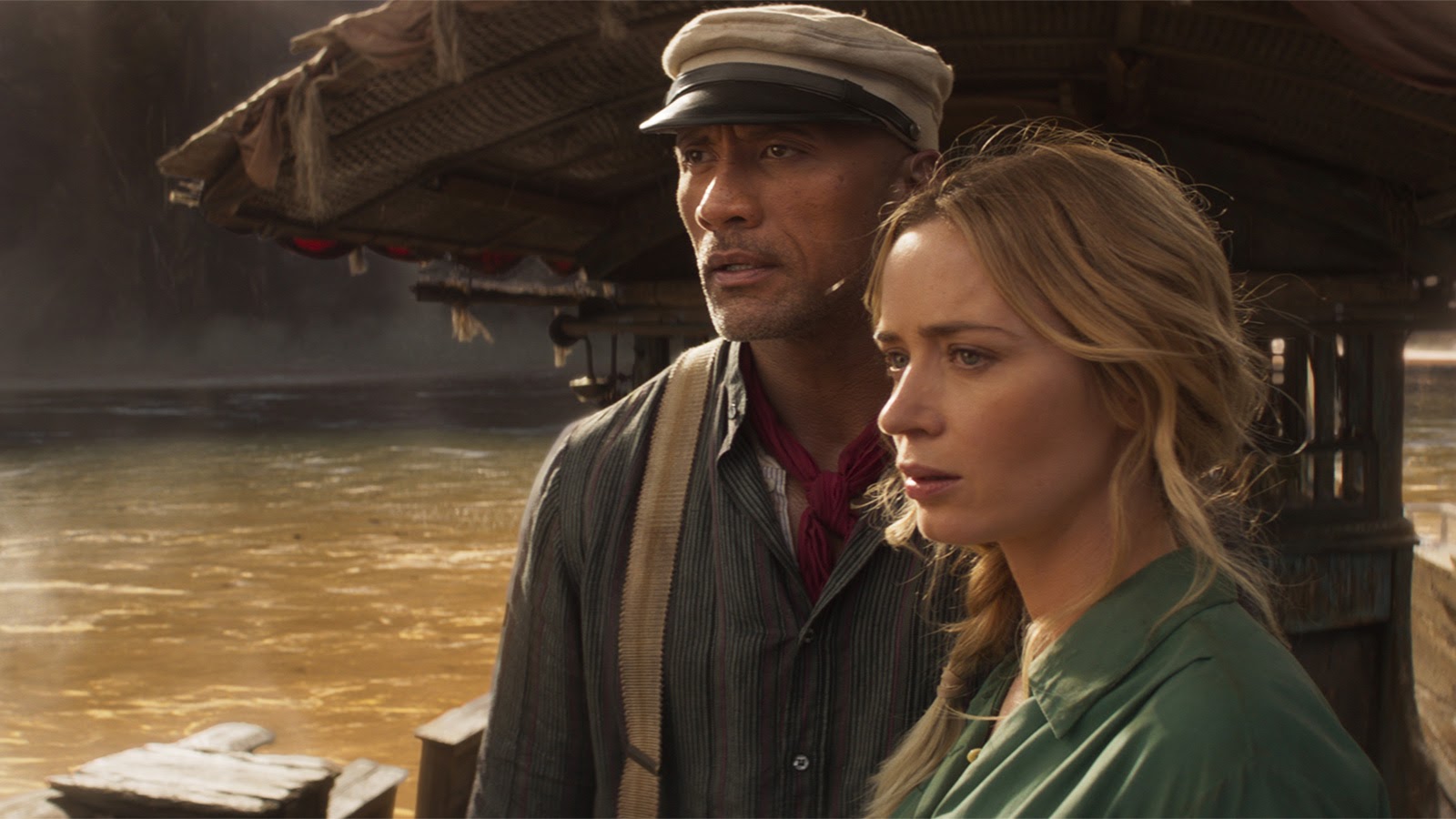
When there’s something missing, I just type in, “Frank enters here,” which is, missing or “Gary’s character comes in and scares these natives away.” I’ll just type those pieces that I don’t have, and if possible, I’ll cut storyboards in. So my first pass is always just a bunch of different title cards, storyboards, maybe some previz. I then keep plugging in the best pieces, like a puzzle. I’ll just keep building on it and building on it until it’s a complete scene. Once it’s a complete scene, I’ll look at it again. I’ll put sound and music on it, and I just keep cutting it.
Once the scene is assembled and in a place where it’s viewable, I look at it again, and I trim it. The other thing I do once the whole thing is completely assembled in a form is I go back and look at the dailies again. I look at everything one more time and find pieces in the dailies that fit into my assembly. I’m always going back and looking at it and trying things, sometimes I’ll finish the sequence, and then we’ll put music and sound effects on it. I’ll show it to the director, and he’ll say, “That’s good for now.” and then I’ll be cutting dailies, and I’ll have a thought, and I’ll just go back and re-cut it again.
It’s just a matter of shaping it until it’s at least to my liking and hopefully my liking and the audience’s liking.
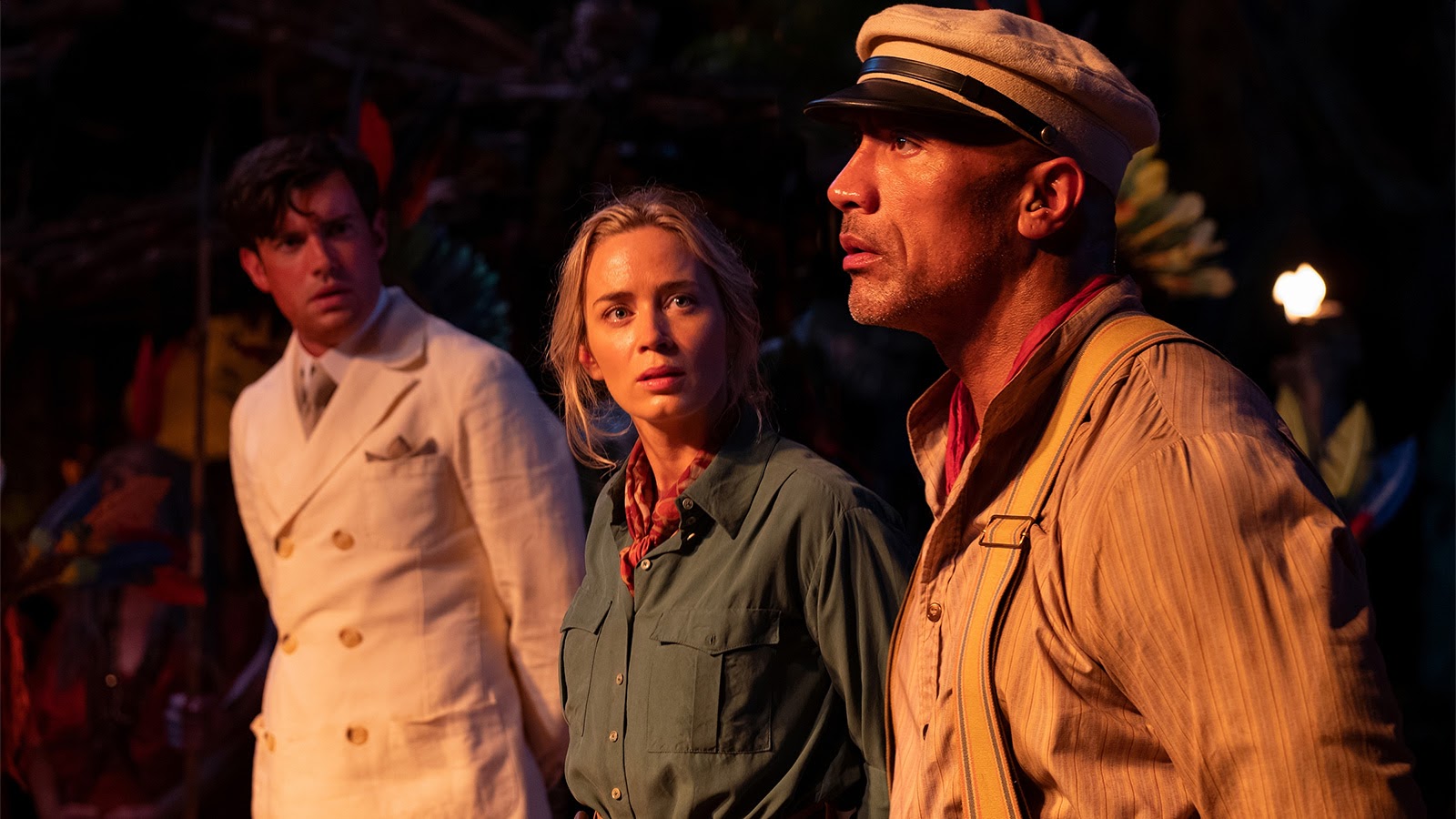
HULLFISH: How long were the delays? Was this supposed to come out last summer?
NEGRON: Last summer and we got shut down due to COVID the last March. We were pretty much locked when everything got shut down. I think one of the reels needed some work still, so we were finishing visual effects, and then we came back last summer to finish the final mix, and now it’s coming out in July. So we were done last September.
HULLFISH: You might think this is how long the shot deserves when you’re looking at a green screen, but then when you see the final shot, it could change your mind on how long you want the shot to play out. Did that happen? What happens when you see a final VFX shot that you want to extend?
There are some shots in the movie now, which I wish were longer.
NEGRON: It happens all the time and what you do is when you order a shot or when you turn it over to the visual effects team, you usually turn it over with handles, and it’s longer than you plan for. The other thing that happens too is in order for the shots to get done, the visual effects companies need X amount of time. So we’ll turn over an early version, which is a longer version more normally, and then once it starts getting better and better, and you start seeing what it’s supposed to be, you do extend it, and you do say, oh, that shot’s really cool. In fact, there are some shots in the movie now, which I wish were longer, but because of time and money, we couldn’t really make them as long as we needed them.
What I do is as we’re cutting in final visual effects shots, I have Rebecca Weigold, our visual effects editor, put it on the top layer on the Avid, so my cut is on, say track V1 V2 that’s where my dailies are. I have her put the new visual effects, shots one layer higher. So they’re just little shots on the layer. Then I can see every new shot that came in that day right in the cut. It’s really handy to do that because every day I come in, she’s got the shots, she cuts them in, and I can just go right to the new shots, and I can see. Yeah, I don’t necessarily cut them in. Then I just extend or shorten it if I want to.
HULLFISH: Talk to me about the value of working with the same director on multiple projects. Was he how you got this gig?
NEGRON: Yeah, he called and talked to me about it. I cut House of Wax, which was his first movie that he directed 20 years ago. He came from a commercial and music video back around, and so did I, so we had a connection there. Commercials and music videos are a certain type of editing style, it’s fast-paced, and all his images that he gets are just, really for lack of a better word, they’re candy-colored, they’re beautiful images, and a lot of commercial directors are all about shots, and he gets really great shots.
We liked each other, and we kept trying to work together after House of Wax for a while, and it didn’t happen until The Shallows; I have the same sensibility as he does, and he knows my sensibility, and he’s also an editor, so he’ll come in and move things around or trim things here and there and we a good working relationship. It’s also a good personal relationship, and he’s very open with me. He tells me all his ideas and all his issues on the film, and we talk through it while he’s shooting; I’ll cut scenes together and assemble them and he’ll come look at things and he’ll know, I’ll make suggestions on things that he’s missing or things that would help us help the sequence to play better. We would talk about it, and then he would be able to go to set the next day, knowing what he needs to pick up or knowing what he needs to adjust.
HULLFISH: One more question of the sound guys, tell me a little bit about what we can do as picture editors to help you?
VAN DER RYN: The first thing that occurs to me is to reach out early; this is what Joel does with us. He reaches out as early as possible, hopefully before shooting even starts. He gets us involved and able to send a toolkit that can help, or if there are previz scenes that have been done, to send those to us and let us get a sound design pass going that can help for presentation purposes.
A lot of times with big films, we’ve been brought in early for green light presentations, and what we found is on films where we’ve been brought in that early, it allows the sound to really help the picture stand up on its feet as early as possible. I would say that’s maybe one of the single biggest things that I think can help us, but more importantly, can help the movie just get standing on his feet sooner.
HUEZO: Yeah. I would add one of the things I love about working with Joel is the discipline you have within your department. There isn’t wasted time, you might have a long schedule, but you still always feel like you’re catching up. There is less time doing meaningless trims and keeping things in sync, which means we’re focusing on the mix and the sound, and we can be creative, not just handling technical sync, conforms, and that kind of thing.
HULLFISH: What is the value and the curse of having the editor in the mix?
VAN DER RYN: For us, it’s fantastic having Joel in the final mix because the whole process leading up to it has been such a tense collaboration that it feels like it needs to continue through the end, that collaboration.
NEGRON: I like being on the dub stage, that’s one of my favorite times of working on the movie, and I know where all the bodies are buried. I know what I’ve heard, all the conversations from the producers. I’ve had millions of conversations with the director, and I know the film really well, and I know what the intention is for every scene in the movie.
I know the taste of the director, so I can say, “He’s not going to like that, so let’s try something different.” and Ethan and Eric will have a whole library of things to try on the dub stage.
I think it makes it go smoother to have the editor there. He’s a person that’s been around since the beginning of the shoot. So he knows the film the best.
VAN DER RYN: In many cases, it feels like the picture editor being there is like having a navigator on a ship because the picture editor, in this case, Joel, has been there through the whole process in all these different meetings and had all these different experiences and has so much inside information the rest of us won’t have. It’s going to inform all the thousands of decisions that need to get made through that mix process.
NEGRON: Janette, can you talk about Metallica because that was something that was really cool how it came about and what you did and how it all ended up in the movie.
SURGA: I came in and saw Joel and Jaume, and almost in passing, Jaume held out his iPhone and said, “I want this in the movie.” It was not score, it was Metallica, and I’m like, “okay, where?” So we put it in, and I had probably seven hours to do it too because time was of the essence. I just went in and took Jaume’s idea and put it against the scene and embellished it with synths and anything else I could think of.
Jaume held out his iPhone and said, “I want this in the movie.’
NEGRON: She was finding different versions of Metallica on the Internet and cutting it in.
SURGA: That’s right, and embellishing it in different ways. We found a number of versions that I could make a collage of, and then I would go in and add a bed of strings just to make sure that it was seamless.
NEGRON: I love it. It’s in the very beginning of the movie, too, right in the opening, the legend.
HULLFISH: That is a great thing for all the listeners of Art of the Cut to look out for. Thank you all so much for your time.

